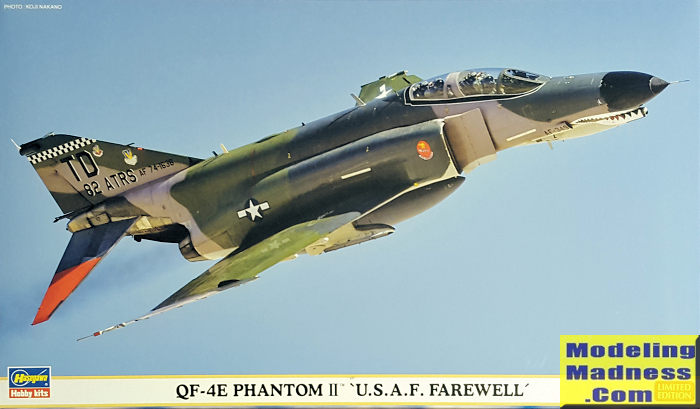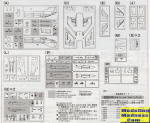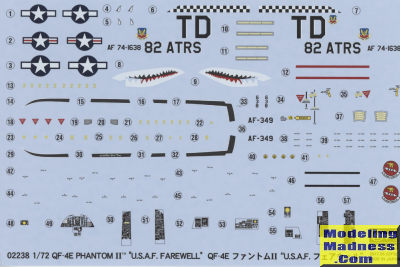
Hasegawa 1/72 QF-4E 'USAF Farewell'
| KIT #: | 02238 |
| PRICE: | 2840 yen (3400 yen SRP) |
| DECALS: | One option |
| REVIEWER: | Scott Van Aken |
| NOTES: | Limited Reissue (2017) |

| HISTORY |
Developed for the Navy, used more by the USAF than any other, built overseas by Kawasaki, and, after nearly 60 years since its first flight, still used by a few nations. A record that will be difficult to eclipse, especially for a combat jet fighter. But what does a nation do with these old warriors when retired?
In the US, the USAF has been using no longer needed military jets for many years as drones. Some are used to test equipment and systems that could be hazardous. Most are expended as aerial targets so that Air Force pilots will get the opportunity to do live fire exercises against a fast, maneuvering opponent.
The USAF has used a variety of airframes as drones and has a rather extensive program set up to convert old aircraft into full scale drones. The cost per conversion is not inexpensive, costing about $2 million an aircraft for the modifications. Apparently this is a good use of the money.
Prior to the use of the F-4, the F-100, F-102 and F-106 were modified and its replacement are early F-16As. Drone controllers are highly experience pilots who have considerable skill and often were pilots of the airframes they control. These aircraft can be fully manned if need be and they are made expendable simply by removing the ejection seats. An interesting bit of info is that with previous and perhaps future drones, a big issue was the weakness of the landing gear. Drones that are not shot down often land a lot harder than normal. It was not uncommon for the landing gear to break or have struts punch through the wing. Not an issue with the F-4 which, as a naval aircraft, was designed to take these sorts of landings on a daily basis.
Most of the airframes turned into drones were F-4E and F-4Gs with a few RF-4Cs. The C and D models were deemed too old with insufficient spares to bother with the conversion. Towards the end of the use of these planes, several were painted in commemorative schemes and flown as part of the USAF's Heritage flight. But I guess that keeping them in the air was becoming too much as last year, the USAF grounded the last of them.
| THE KIT |
 This
kit represents that last QF-4, 74-1638. In this case it is a very
late build E model and like the other later special QF-4s is painted
in a glossy scheme. In this case it is SEA colors, though it still
has the international orange tips on the stabilizers.
This
kit represents that last QF-4, 74-1638. In this case it is a very
late build E model and like the other later special QF-4s is painted
in a glossy scheme. In this case it is SEA colors, though it still
has the international orange tips on the stabilizers.  Naturally,
it would not be armed, yet still kept the inner wing pylons and the
Sidewinder rails. Those with sharp eyes will notice that the
insignia is of a style not used since 1946. The sheet isn't sure if
the other side or underside has current insignia or not and provides
those as an option.
Naturally,
it would not be armed, yet still kept the inner wing pylons and the
Sidewinder rails. Those with sharp eyes will notice that the
insignia is of a style not used since 1946. The sheet isn't sure if
the other side or underside has current insignia or not and provides
those as an option. | CONCLUSIONS |
| REFERENCES |
References? I don't need no steenkin' references!
May 2017
My thanks to me for picking this one up.
If you would like your product reviewed fairly and fairly quickly, please contact the editor or see other details in the Note to Contributors.
Back to the Main Page Back to the Previews Index Page Back to the Review Index Page